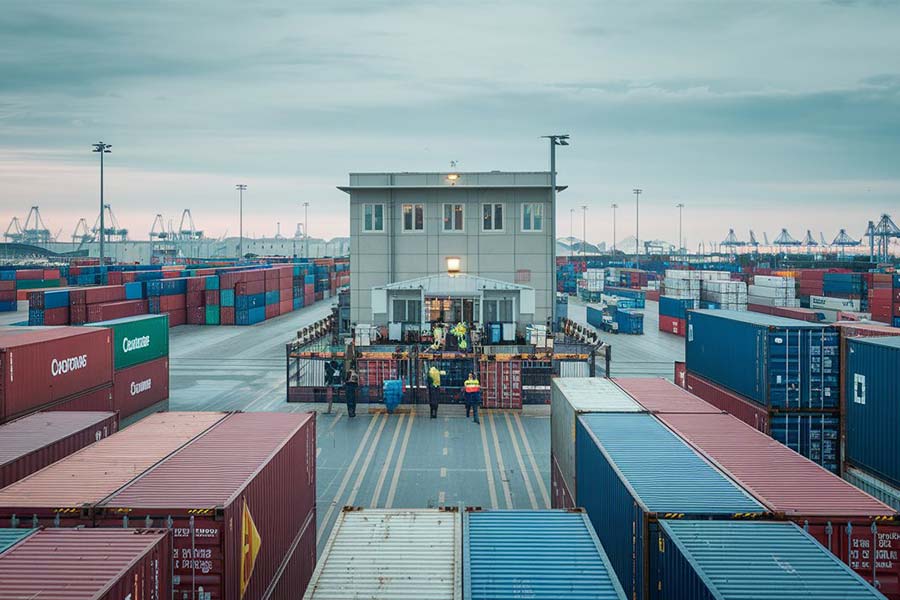
When Customs Knocks: The "Past and Present" of Enterprise Audits and Inspections
As a "veteran in foreign trade" with 20 years of experience, I am often asked by companies: "Why did customs suddenly conduct an audit?" In fact, according to Article 45 of the Customs Law, customs has the authority to audit relevant enterprises within three years after the release of goods (or within the supervision period plus three years for supervised goods). This is similar to routine inspections by tax authorities and is a normal means for customs to fulfill its regulatory responsibilities.
Based on my hands-on experience, customs audits primarily focus on three types of "red flags":
- Data anomalies: Declared prices significantly deviate from industry levels
- Document contradictions: Inconsistencies between customs declarations and contracts/invoices
- Process loopholes: Processing trade write-off differences exceed reasonable ranges
Three Essential Strategies for Audit Response: From Chaos to Mastery
First axis: The art of supplementary materials
When receiving customs Request for Supplementary Materials, remember three key points:
- In the livestock industry, imported breeding cattle are literally walking gold. These purebred aristocrats include Holstein, Jersey...: Must respond within 7 working days
- Completeness: Provide complete chain evidence from original contracts to payment vouchers
- Professionalism: Foreign language materials require officially certified Chinese translations
I once assisted an electronics company in responding to classification queries. By providing 15 technical documents including product design drawings and BOM lists, we successfully adjusted the tariff rate from 8% to 3%, saving over 2 million yuan in annual taxes.
Second axis: The game of feedback opinions
When facing the Audit Opinion Consultation Letter, companies have two options:
- Tactical agreement: Quickly confirm non-controversial items to accelerate the process
- Strategic defense: Attach professional legal opinions to questionable conclusions
Last year, a garment company successfully overturned customs misjudgment on synthetic fiber composition by submittingThird-party inspection report+expert testimony from industry professionals, avoiding an administrative penalty of 6 million yuan.
Third axis: The wisdom of voluntary disclosure
According to Article 26 of the Inspection Regulations, voluntary disclosure may result in a lighter penalty. However, beware of three "deadly traps":
- Disclosing after customs has already obtained clues (losing eligibility for penalty reduction)
- Selective disclosure of information (may result in heavier penalties)
- Failure to simultaneously submit complete evidence chain (rendering disclosure invalid)
It is recommended to adopt the "Three-Step Disclosure Method":
- Conduct internal compliance audit to identify issues
- Hire professional institutions for risk assessment
- Formally declare through the "Internet + Customs" platform.
Special Reminder: These "No-Go Zones" Must Be Avoided at All Costs
In assisting enterprises with 300+ inspection cases, I found 90% of penalty escalations stem from the following mistakes:
- Delaying tactics: Failure to respond within 7 days is considered as admission
- Selective provision: Concealing related transaction documents
- Data falsification: Altering original ERP system records
- Resisting inspection: Refusing to open warehouse management system
A food importer was not only required to pay back taxes but also placed on the customs' "key supervision enterprise" list for unauthorized alteration of cold chain temperature records, resulting in a threefold extension of customs clearance time.
Post-audit "Golden 72 Hours" Action Guide
The conclusion of inspection marks the beginning of risk management. We recommend immediately initiating:
- Corrective measures: Revise SOP procedures for identified issues
- System upgrade: Set up compliance checkpoints in ERP system
- Training program: Conduct customs compliance training quarterly
- Health checkAnnual Trade Compliance Audit
Keep in mind that customs audits are not about "nitpicking," but rather a "free health check" to help businesses identify blind spots in management. By responding with a professional attitude and seizing the opportunity to enhance internal controls, you can pave the way for broader international trade prospects.
Encountering specific challenges? Feel free to reach out to me, the "veteran foreign trade practitioner," for a diagnosis and tailored solutions!


 Follow the customer service WeChat account.
Follow the customer service WeChat account.